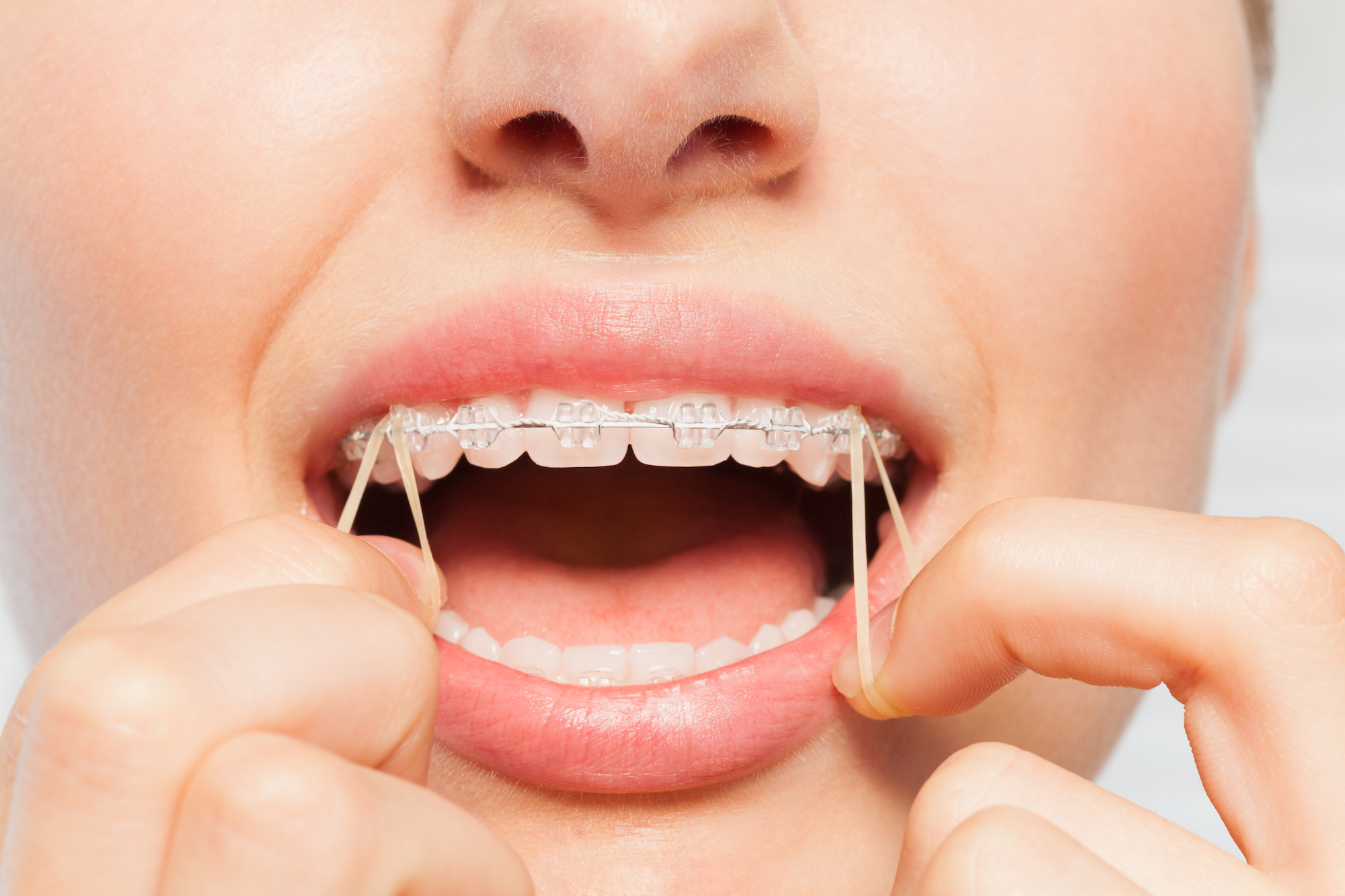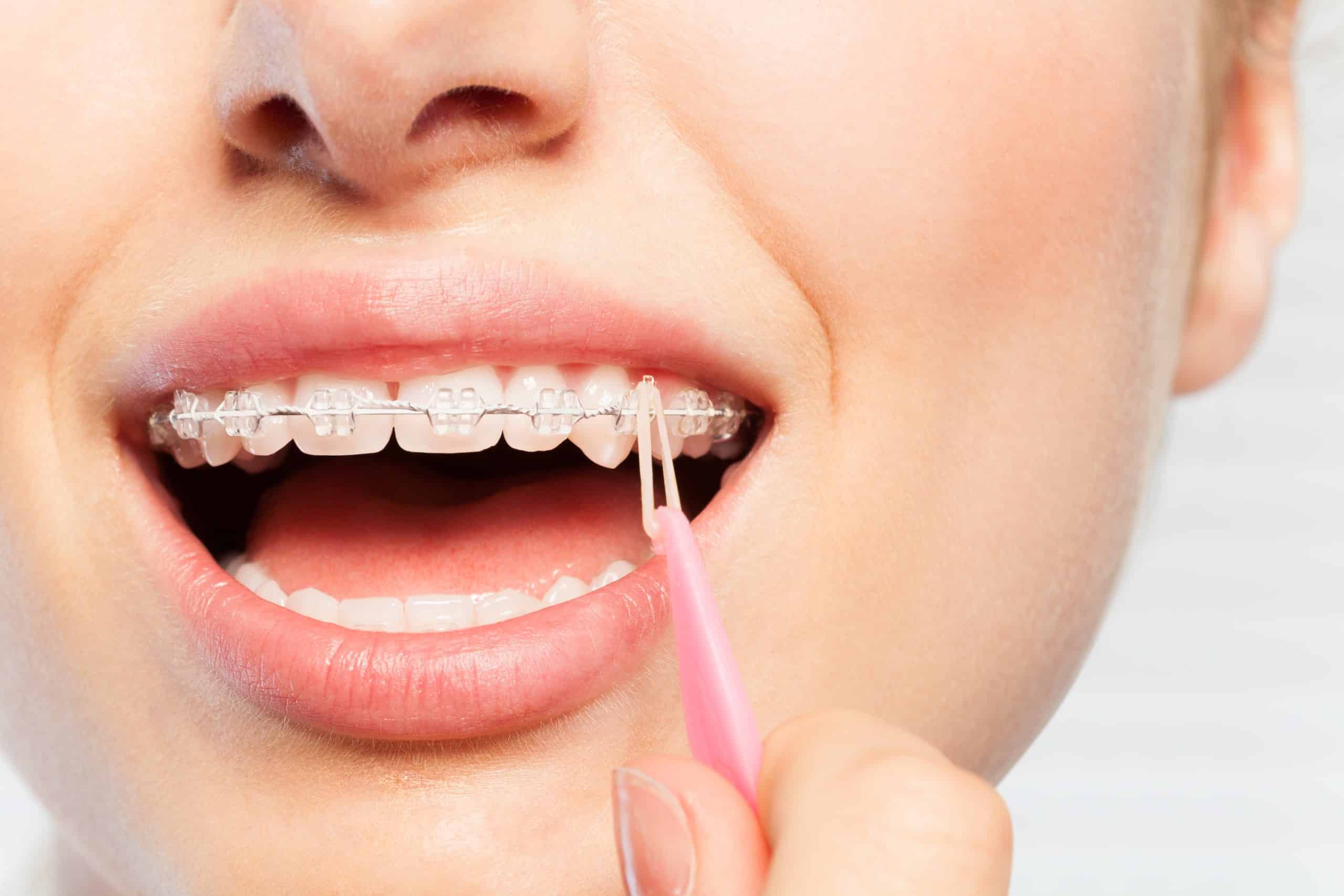Table of Contents
Rubber bands, also known as elastics, play a pivotal role in orthodontics, a dental specialty that diagnoses, prevents, and corrects malpositioned teeth and jaws.
These small but mighty tools are integral to many orthodontic treatment plans, offering patients functional and aesthetic benefits.
The Purpose of Rubber Bands in Orthodontics
1. Correcting Bite Misalignments
One of the primary purposes of rubber bands in orthodontics is to correct bite misalignments (Malocclusion), such as overbites, underbites, crossbites, and open bites.
These conditions can lead to difficulties in chewing and speaking and even cause long-term oral health issues.
Rubber bands exert constant force to move teeth into a more ideal alignment, improving the bite and overall function of the mouth.
2. Enhancing Tooth Movement
Rubber bands are often used with braces or clear aligners to enhance tooth movement and more efficiently guide teeth into their correct positions.
They apply a steady pressure that supports the braces or aligners in shifting the teeth and jaw into alignment.
3. Improving Jaw Alignment
In addition to correcting teeth positioning, rubber bands can also be employed to adjust the jaw’s position.
For example, rubber bands can provide the necessary force to facilitate the adjustment of the lower jaw when it needs to be moved forward or backward to achieve a proper bite.
How Rubber Bands Work
Rubber bands are attached to hooks on braces or buttons on aligners and stretch between different points in the mouth, depending on the correction needed.
The tension created by the stretched band applies a continuous force, encouraging the teeth and jaw to move in the desired direction.
Orthodontists carefully calculate this force to ensure it is strong enough to effect change but not so strong as to cause damage or excessive discomfort.
Types of Rubber Bands in Orthodontics

Elastics are indispensable for correcting dental alignment issues. These small yet powerful components are meticulously categorized based on their dimensions, tensile strength, and the specific orthodontic challenges they are designed to tackle.
Here’s a more detailed exploration of the common types of rubber bands used in orthodontic treatments:
Interarch Bands
Interarch bands address bite discrepancies by bridging the upper and lower jaws.
They are instrumental in correcting malocclusions, where the alignment of the upper and lower teeth does not fit properly when the mouth is closed.
Depending on the patient’s needs, these bands can be applied in different configurations to either pull the jaw forward or push it back, correcting overbites, underbites, and other bite issues.
The strategic use of interarch bands can significantly enhance jaw alignment and improve the patient’s bite functionality and aesthetic appearance.
Intraarch Bands
Intra-arch bands are utilised within a single dental arch, either the upper or the lower, to amend spacing issues between teeth.
They effectively close gaps (diastemas) or redistribute spaces evenly across the dental arch.
By applying a consistent force between specific teeth, intra-arch bands can gently coax them into more ideal positions, eliminating unwanted spaces or creating a room where teeth are overcrowded.
This targeted approach allows orthodontists to fine-tune the spacing and alignment of teeth within an arch for a harmonious and functional bite.
Class I, II, and III Elastics
Class I, II, and III elastics are distinguished by the directionality and type of force they exert, each tailored to correct specific kinds of malocclusions:
Class I Elastics
Class I Elastics are generally used to correct minor misalignments and assist in the overall coordination of the upper and lower teeth.
They might be employed to fine-tune the fit of the teeth within each arch or to improve the end-to-end relationship between molars and premolars.
Class II Elastics
Class II Elastics are designed to address Class II malocclusions, where there is a significant overbite with the upper teeth protruding beyond the lower teeth.
Elastics extend from the upper back teeth to the lower front teeth, applying a force that encourages the backward movement of the upper teeth or forward movement of the lower teeth, aiding in the correction of the overbite.
Class III Elastics
Class III Elastics target Class III malocclusions, characterised by an underbite where the lower teeth extend beyond the upper teeth.
These elastics run opposite Class II, from the lower back to the upper front teeth. This setup exerts a force that pulls the upper jaw forward while pushing the lower jaw back, working to correct the underbite.
Each rubber band type is chosen based on the individual’s unique dental anatomy and the required correction.
Orthodontists meticulously select the appropriate type, size, and strength of elastics to apply the precise amount of force needed to guide teeth and jaws into their optimal positions.
Patient compliance in wearing these elastics as prescribed is crucial for the success of the treatment, making education and understanding of their purpose integral to achieving the desired orthodontic outcomes.
Patient Considerations
The effectiveness of rubber bands in orthodontic treatment is undeniably significant, yet it hinges profoundly on the patient’s adherence to their orthodontist’s instructions.
Patients must be diligent in their responsibilities to ensure the optimal outcome from using rubber bands.
Here’s an expanded look at the essential considerations for patients undergoing treatment with orthodontic rubber bands:
Adherence to Wear Instructions
The cornerstone of successful orthodontic treatment with rubber bands is the patient’s commitment to wearing them exactly as prescribed.
Orthodontists typically instruct patients to wear their elastics continuously, 24 hours a day, making exceptions only for eating, brushing, and, in some cases, specific activities that may require removal.
This continuous wear is critical because the consistent force applied by the rubber bands is necessary to guide the teeth and jaws into the desired position.
Any deviation from this regimen can significantly slow down or even reverse progress, prolonging treatment time and potentially compromising the results.
Consistent Replacement of Rubber Bands
Rubber bands lose their elasticity and strength over time, which can lead to a decrease in the amount of force applied to the teeth and jaws.
To counteract this, patients are advised to replace their rubber bands at least once daily or more frequently if their orthodontist recommends it.
Regular replacement ensures that the force exerted by the elastics remains constant, which is vital for moving teeth into their correct positions.
Patients should always have a supply of rubber bands and develop a routine for changing them, possibly aligning this habit with other daily activities such as morning and evening oral hygiene practices.
Importance of Regular Orthodontic Appointments
Scheduled follow-up appointments with the orthodontist are integral to the rubber bands’ treatment process.
These visits allow the orthodontist to assess the progress of the treatment, adjust the tension of the rubber bands if necessary, and address any concerns or issues that may have arisen.
During these appointments, the orthodontist can also provide feedback on the patient’s adherence to the wear schedule and offer encouragement or strategies to improve compliance if needed.
Skipping or delaying these appointments can hinder the treatment progress and lead to extended treatment times or less-than-optimal results.
Do you need rubber bands with clear aligners?
Rubber bands are sometimes used with clear aligners to enhance orthodontic treatment.
While clear aligners are effective at straightening teeth and correcting minor to moderate alignment issues, rubber bands can provide the additional force needed for more complex adjustments, such as correcting bite issues (e.g., overbite, underbite, crossbite, open bite) and aiding in the proper alignment of the jaw.
Rubber bands with clear aligners work similarly to those used with traditional braces. They are attached to small hooks or buttons that may be placed on the aligners or bonded attachments on the teeth.
These elastics stretch between different points in the mouth, applying the necessary force to move the teeth and jaw into the desired position.
Rubber bands are tailored to the individual’s needs; not every patient with clear aligners will require them.
Your orthodontist will determine if rubber bands are necessary for your treatment plan based on thoroughly examining your teeth, jaw alignment, and overall orthodontic goals.
If prescribed, it’s important to wear the rubber bands as directed to ensure the effectiveness of your treatment and achieve the best possible outcome.
Using Private Health Insurance for Orthodontic Treatment
In Australia, orthodontic treatment can often be claimed on private health insurance, depending on your level of coverage.
Most private health insurance policies that include dental coverage have a specific provision for orthodontic treatment.
However, there are several important factors to consider:
- Waiting Periods: Many insurance policies include periods for orthodontic treatment, typically 12 to 24 months. You must hold the policy for this duration before claiming orthodontic work.
- Lifetime Limits: Orthodontic coverage usually comes with a lifetime limit per person. This limit is the maximum amount the insurance company will pay towards orthodontic treatment over the policyholder’s lifetime.
- Yearly Limits: Some policies may have annual limits for orthodontic treatment, in addition to lifetime limits. These are separate from the general dental cover and apply to orthodontic work.
- Percentage of Costs Covered: Insurance policies may cover a certain percentage of orthodontic treatment costs up to a specified limit, which can vary widely depending on the provider and policy coverage.
- Treatment Eligibility: Some policies might restrict the types of orthodontic treatments covered. For example, traditional braces may be covered, while clear aligners might only be partially or not covered, depending on the provider and policy.
- Pre-approval Requirements: For higher-cost treatments like orthodontics, your insurance provider may require pre-approval or a treatment plan submitted by your orthodontist before beginning treatment to ensure that the claim will be accepted.
Given these considerations, it is crucial to review your private health insurance policy details or speak directly with your insurance provider to understand the specifics of your orthodontic coverage.
Additionally, discussing your treatment plan and costs with your orthodontist can help you understand how much of the treatment may be covered by insurance and what out-of-pocket expenses you might expect.
It’s important to check this limit with your provider, as orthodontic treatments can be a significant investment, and the limit may cover only a portion of the total treatment costs.
Conclusion
Rubber bands in orthodontics are critical in correcting bite misalignments, enhancing tooth movement, and improving jaw alignment.
Their effectiveness is predicated on the principles of constant and directed force application, which requires diligent patient compliance.
With the correct use of rubber bands, patients can significantly improve the function and aesthetics of their smiles, leading to long-lasting oral health benefits.




